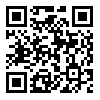Background: Effective disaster response is a crucial factor in reducing casualty rate in the affected areas by earthquake. This study aims to compare training methodology for international USAR teams in Iran and United Nations.
Method: In this comparative - desc riptive study, data was collected from national and international instructions, rules and regulations series and databa ses. Operational level, team roles and team structures were compared in national and international teams. The main focus of the study was on the training methodology and contents of the training programs.
Findings: National training methodology is mainly ba sed on the role of desc riptions. Operational levels and team classifications are not defined in national teams. Team structure does not comprise all five components required by INSARAG guidelines. The number of staff and staff allocation are different from INSARAG guidelines. Team roles are not defined clearly.
Conclusion: Operational level and teams had better to be classified according to structures. Existing independent teams can be integrated into five-component standard teams. Training methodology and components need improvement. Capacity building in rural areas may be improved by training first responders. In urban areas with structure material diversity, teams in different operational levels must be trained.
| Rights and permissions | |
 |
This work is licensed under a Creative Commons Attribution-NonCommercial 4.0 International License. |


